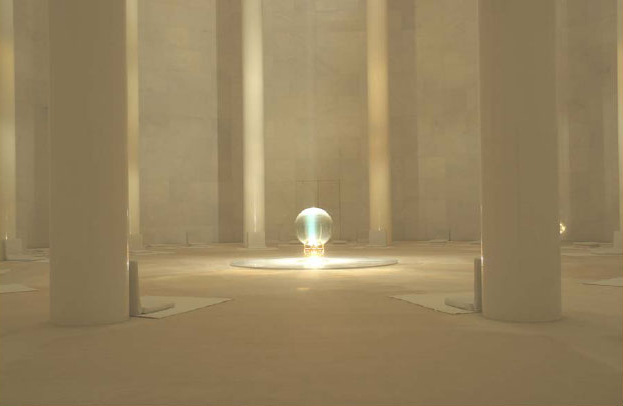The Matrimandir
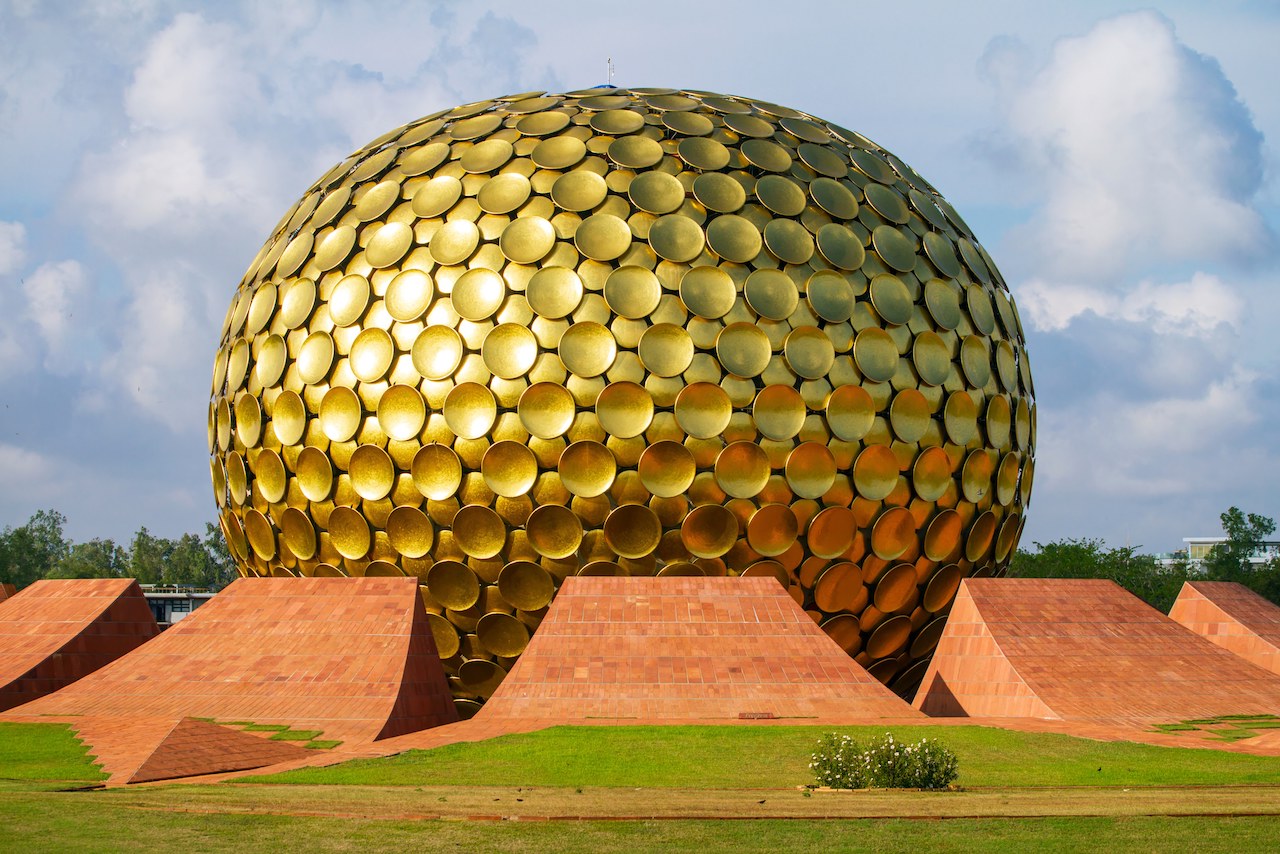
To some it looks like the sun, others say it is like the physical representation of a soul, and others see it as a giant golden golf ball. Regardless, the Matrimandir is one of the most remarkable places, both physically and spiritually, that I have ever experienced.
The founder of the experimental city of Auroville in South India, lovingly called “The Mother,” had vivid visions in which she saw the interior of today’s standing golden dome. French architect Roger Anger created the dome as a meditation space in devotion to the ideas of “divine consciousness” and human unity. Auroville is a galaxy-shaped city separated into four zones with the futuristic Matrimandir at its center. Robert Anger, who helped design the city, also built four schools designed to facilitate a new kind of education unlike standard school systems equipped with classrooms and strict ideas of subjects. Almost 40 years after builders broke ground, the Matrimandir began accepting visitors.
Auroville is a galaxy-shaped city separated into four zones with the futuristic Matrimandir at its center.
The complexity of arranging visits to the Matrimandir is a stark contrast to the meditative calm that pervades within the golden sphere. Appointments can only be made at specific hours with many slots booked in advance. The organization of visits appears designed to weed out travelers whose hearts are not entirely captivated by the desire to enter into the Matrimandir.
The Matrimandir is difficult to describe, but can perhaps be evoked. The exterior of the structure provokes curiosity, as it looks so unlike normal architecture. Hoping to imagine the interior, I asked numerous people to describe the inside, but their responses led me astray from reality. I was unable to grasp what it looked like, and with very few pictures of it on the Internet, the subject was left a mystery. The few existing pictures fail to portray the magnitude and feelings of awe upon entry.
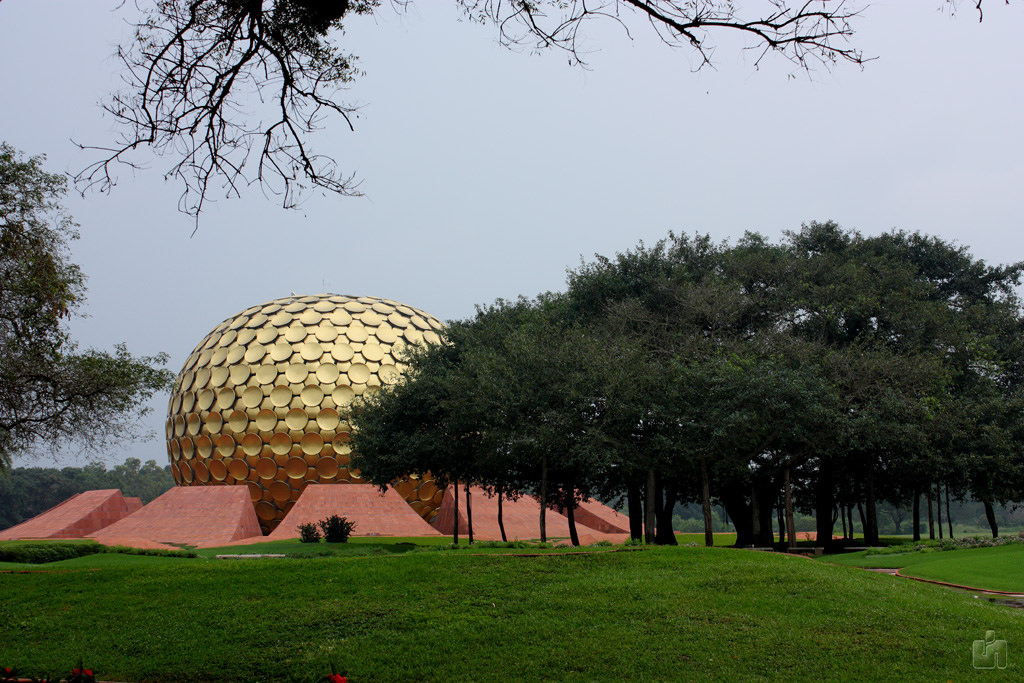
Before entering into the Matrimandir, tourists are ushered into a small white amphitheater where they sit on white steps to watch a short video which seems decades old. The short film covers the purposes and goals of Auroville and the Matrimandir but leaves many questions unanswered.
Indians and foreigners alike wear flowing minimalist clothing, their sandals picking up the bright red dirt. Only three of the 12 lush, man-made gardens surrounding the dome have been completed. They stand as a tribute to nature but the golden orb shadowing them serves as an obvious tribute to the creations of man. Some argue that Auroville’s goal of sustainability is obscured by the hypocrisy of placing at its center a shiny and large dome reminiscent of Disney’s silver Epcot sphere.
Auroville contains an ancient Banyan tree, which sits right outside of the Matrimandir, sheltering meditators who sit with their backs pressed against the branches growing into the ground. They form the perfect back to chairs and the sunny warm weather makes the shade of the tree a perfect place for rest and thought. With phones confiscated and shoes off, one is finally ready to experience the mystery of the Matrimandir.
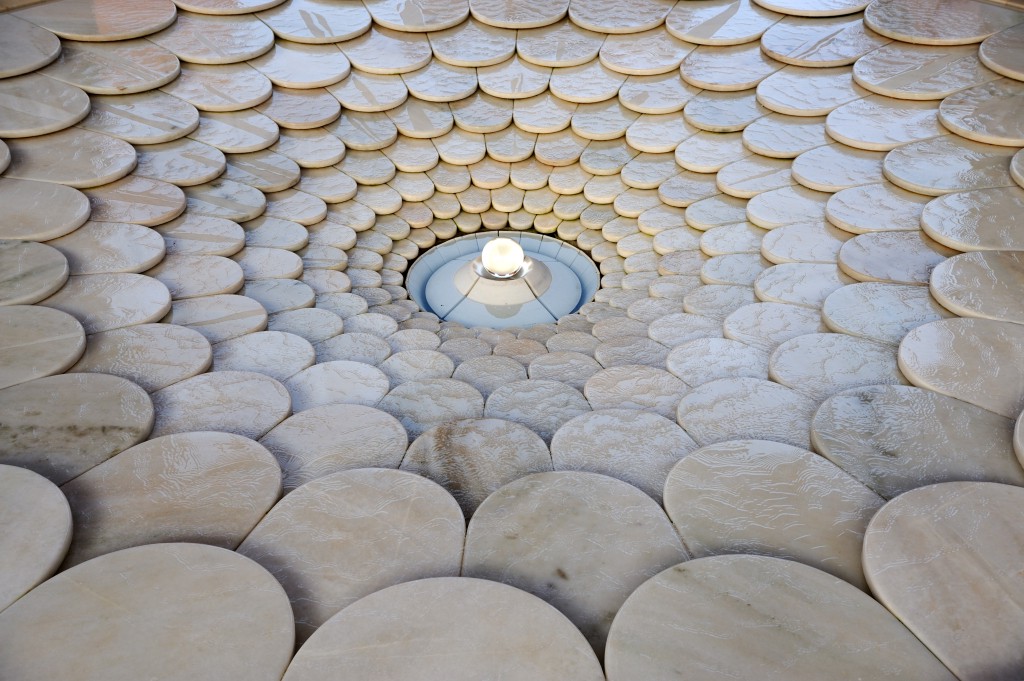
To enter the Matrimandir, visitors walk through one of its 12 petal-like panels and pass through a small hallway with a color-themed meditation room. The petals are made of red stone and each help to hold the Matrimandir off the ground. The petals’ themes are based on the 12 virtues, like goodness, courage, progress, peace, and equality. The space under the floating orb is a meditation lotus pond. A trickle of water runs over the petal-shaped tiles of the marble pond that holds a crystal ball in the center capturing sun rays. Every part of the area which surrounds the Matrimandir, from its gardens to the petals upon which it balances, was thoughtfully and creatively used to house space for meditation.
The final stage of the visit is entering the “inner chamber.” Walking up a steep flight of stairs into the inside of the golden sphere was daunting. I felt I was on the set of a dystopian science-fiction film. At the top of the steps, each visitor is given a pair of long white socks to wear. Upon walking up the small ramp, I found myself inside the sphere. A few Auroville residents were inside directing us to a spiraling ramp that went up to the ceiling. It eerily reminded me of a cult initiation. The visitors, all clad in knee-high white socks, walked up the long winding ramp. Although I knew we were just going to a room to meditate, the words “lamb to the slaughter” came to my mind; the empty, quiet, and clean white space was unexpected and very spooky.
After the long ascent, we finally arrived at the “inner chamber.” While this meditation room is easily describable, words will never do justice to the feeling of awe that it bestows upon those who enter. Completely silent, and told to step outside for coughing due to echos, each person took a seat on a white meditation cushion. Looking around I realized the room was surprisingly large. It was of such a bright white it seemed to be symbolic of heaven: walking up a huge spiral into a bright white room in the sky.
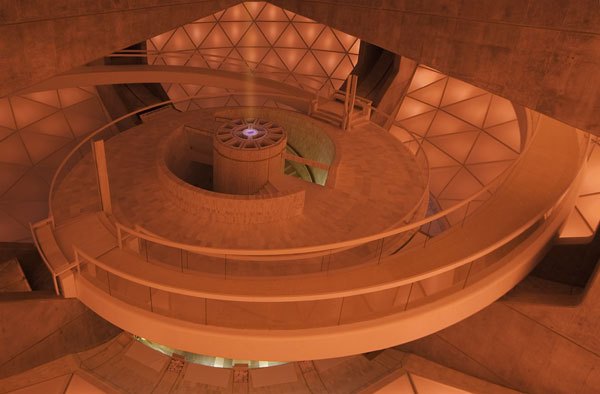
A huge circular crystal, 70 centimeters in diameter, is situated in the center of the room propped up on a golden stand, with a beam of sunlight coming from a circular skylight and hitting the center of the ball. The silence and mysterious breeze, (produced by air conditioning as I learned later), made the place seem all the more magical, generating a sense of peace that one very rarely finds in the outside world. Some visitors had their eyes closed, and others open during the fifteen-minute meditation. Although openly religious acts and rituals are discouraged, the spirituality of this place unites all different religions and peoples.
I have never experienced a place so spiritual and yet so unassociated with religion. The Matrimandir is a unique space that welcomes anyone who is looking to further their spirituality, reflection, and meditation. The architecture and magical environment help facilitate this and make it a place unlike any other. In a world full of skyscrapers, the circular and grounded Matrimandir is tied to the land around it through its gardens in a nourishing setting.
